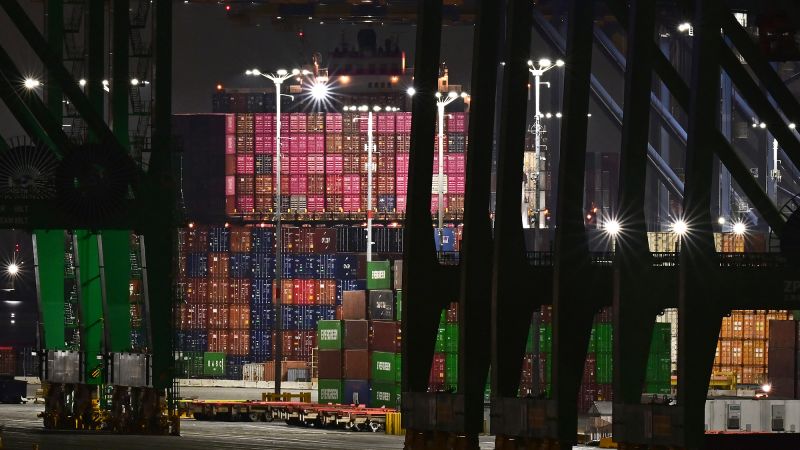In 2017, a couple from Denver, Christina and Ian Lacey, took a leap of faith that has since altered the course of their lives. Opting to forgo stable career paths, Christina, a former dental assistant, and Ian, with his background in information technology, decided to transform their hobby into a burgeoning small business. This decision was fueled by their passion for creating unique jewelry from recycled materials, particularly repurposed guitar and bass strings. Their venture, known as Retuned Jewelry, started in the comfort of their home and has experienced remarkable financial success, achieving an average of $360,000 in annual sales by actively participating in music and art festivals across the region.
The dedication and relentless hard work the Laceys invested in their business have not gone unnoticed. Christina remarked, “We’ve worked 24/7 on this. This is our baby. We’ve pushed through burnout just to keep it alive.” However, the passionate pursuit of their dreams now faces significant challenges due to external economic pressures. Specifically, the implementation of 145% tariffs on Chinese imports by former President Donald Trump is creating considerable obstacles. In 2024 alone, these tariffs impacted approximately $440 billion worth of goods flowing into the U.S. Consequently, small businesses like Retuned Jewelry are left vulnerable to the repercussions, as articulated by John Arensmeyer, the founder and CEO of Small Business Majority, an organization advocating for the interests of a diverse network of 85,000 small businesses.
Arensmeyer pointed out the precarious situation small businesses find themselves in, stating that they may be compelled to elevate product prices, scale back on staff, postpone growth ambitions, or even shut down altogether. Particularly concerning is the fact that many small business owners operate with thin profit margins, leaving them with little leverage or financial cushioning during challenging times. He underscored, “Small businesses have thinner margins and less leverage to negotiate with suppliers.”
For the Laceys, their business hinges on acquiring materials that would otherwise be dumped in landfills. Although they manage to procure the guitar strings for free, the beads, chains, clasps, and hooks they use predominantly depend on imports from China. Ian Lacey expressed frustration with the inability to source similar materials domestically, revealing, “We’ve looked… There’s no facility here that makes what we need.” In readiness for the impending tariffs, they have preemptively raised prices on their jewelry items to mitigate financial strain.
Furthermore, Arensmeyer suggested that the tariffs pose a dire crisis for small businesses lacking adequate cash reserves to absorb rising costs. The implications extend beyond just the Laceys’ operation; similar challenges are faced by other small enterprises. For instance, Ann Brunett, Chief Operating Officer of The Mitchell Group, a second-generation textile company situated in Niles, Illinois, has noted how these tariffs severely impact their cash flow. She stated, “Because of our business model, tariffs have put a serious strain on our cash flow,” as the company often has to hold on to inventory while incurring additional charges due to tariffs.
Ann’s observations echo the reality faced by over a dozen employees at The Mitchell Group, which generates roughly $10 million in annual revenue. Brunett emphasized that the survival of their business means the world to them, as they strive to avoid downsizing their workforce. Bill Fisch, the company’s president, has actively explored alternative production venues in countries including Vietnam, India, and Malaysia; however, he lamented, “No one has the infrastructure China does,” underscoring the complexities of reshaping their supply chains.
While Donald Trump heralded tariffs as a strategy to invigorate domestic manufacturing, experts like Arensmeyer caution that cultivating a self-sustaining manufacturing base in the U.S. will take time. He remarked, “You can’t just say, ‘Oh, we’re going to have a tariff, and now people are going to buy domestically,’ when we don’t have those products being made domestically.”
Over recent decades, the U.S. textile and apparel industry has been in a steady decline, facing fierce competition from cheaper production facilities overseas and the broader forces of globalization. According to Sheng Lu, a professor at the University of Delaware’s Department of Fashion and Apparel Studies, this decline has rendered many essential materials, particularly specialized textiles and polymers, nearly impossible to procure from American sources. Fisch underscored this critical supply issue, noting that finding sufficient workers to operate a fabric factory in Mississippi has proven to be another significant hurdle. In his words, “The textile business for our kind of product? It’s gone here.” These challenges intertwine to paint a portrait of the current crisis, economic turbulence, and the precarities facing American small businesses in today’s globalized market.



